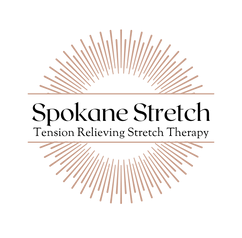How Fascial Stretch Therapy can boost your running performance and speed
Updated: Apr 12
What is Fascial Stretch Therapy?
Fascial Stretch Therapy (or FST) targets not only the muscles, but also the fascia, the connective tissue that surrounds muscles, bones, and joints. FST also targets the joint capsule, using traction to remove restrictions from movement and stimulate lubrication. A therapist will gently guide the arms, legs, spine, and neck in a smooth motion through varying planes of movement. There is no pain. Instead, the gentle movement is stimulating and relaxing at the same time.
While static stretching can cause some gains in linear flexibility, FST uses multiple angles along the muscle/fascia nets, which leads to better overall, more functional, flexibility and mobility of the joints.

Fascial Stretch Therapy can help restore balance and symmetry
Healthy fascia is fast and reactive and supports the need to move quickly. Improving range of motion and elasticity can maintain stride length and you will be better able to absorb impact.
Fascial Stretch Therapy can reduce the risk of injury
Lack of mobility can lead to compensations and increased risk of strains. Because FST focuses on the connective tissue, it can reduce these risks.
FST is designed for your specific needs
Unlike regular static stretching, a fascial stretch therapist treats both sides of your body differently, based on the assessment of your needs.
Fascial Stretch Therapy is calming, soothing, and pain-free
Running is a high-impact event. FST calms the nervous system, relaxes the body, and is pain-free, all the while producing incredible results.
Fascial Stretch Therapy can address specific running issues and injuries
While not a medical therapy program, your FST practitioner can work with physical therapists to help resolve common running issues, including plantar fasciitis, sciatica, piriformis syndrome, and other gait-related injuries.
That Fascial Stretch Therapy is an essential part of a runner’s performance and recovery program.

